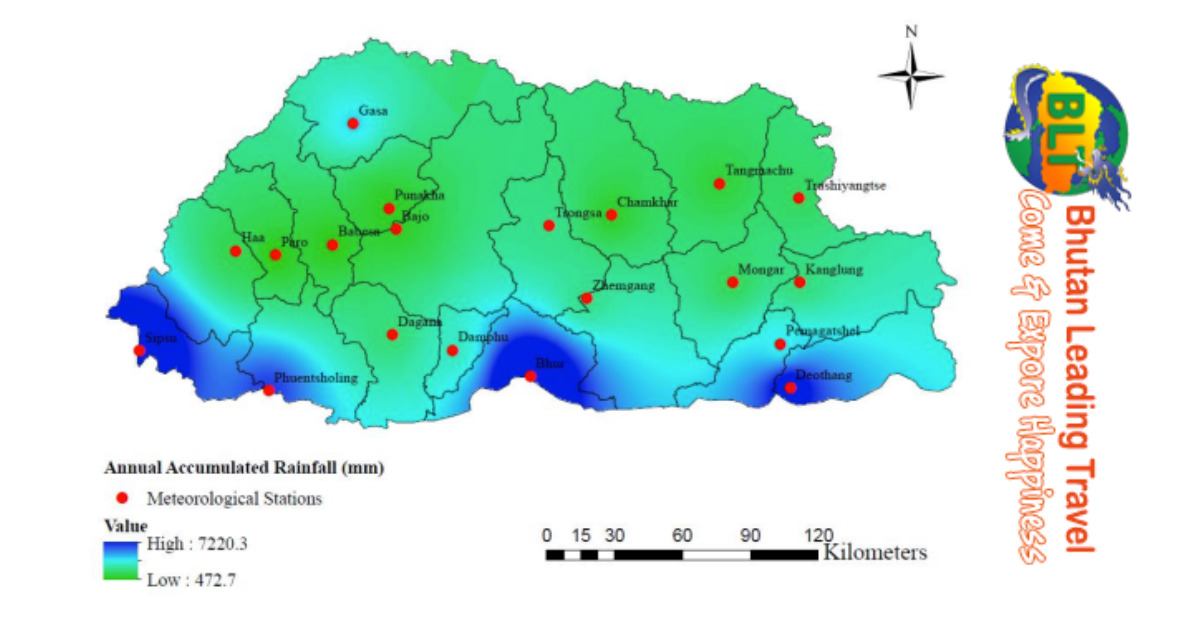Understanding Bhutan’s Climate: A Comprehensive Guide
Bhutan, a landlocked country nestled in the Eastern Himalayas, boasts a diverse climate that ranges from tropical in the southern plains to severe winters and cool summers in the north. This article provides an in-depth look at Bhutan’s weather patterns, focusing on temperature variations, precipitation levels, and wind speeds.
Bhutan’s Geographic Diversity & Its Impact on Climate
Bhutan’s topography is predominantly mountainous, interspersed with fertile valleys and savanna. This geographic diversity significantly influences the country’s climate, resulting in a wide range of weather conditions. The central valley’s experience cool winters and hot summers, while the northern regions endure severe winters and cool summers.
Temperature Trends in Thimphu
Thimphu, Bhutan’s capital, experiences a wide range of temperatures throughout the year. In January, the city’s daily average maximum temperature barely reaches 1°C, while the average minimum plunges to a chilly -17°C. Contrastingly, June sees a more comfortable climate, with the average maximum temperature rising to 12°C and the minimum to a mild 3°C.
Precipitation Patterns in Thimphu
Thimphu’s rainfall varies significantly throughout the year. August is the wettest month, with an average precipitation of 106.2mm. On the other hand, December is the driest month, receiving a meager 2.2mm of rainfall on average.
Yearly Weather Trends in Bhutan
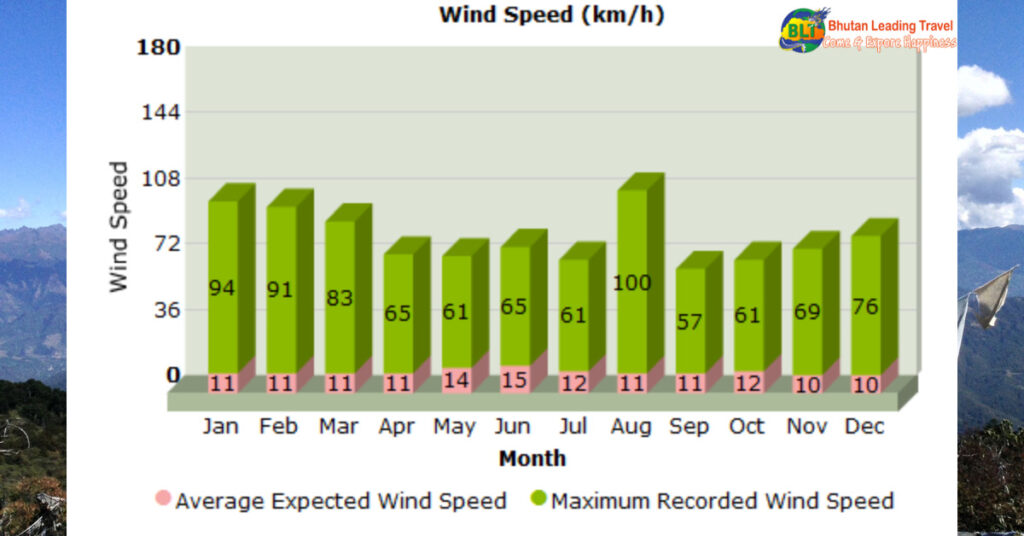
To understand Bhutan’s climate better, let’s delve into the yearly weather trends, focusing on temperature, precipitation, rain days, snow days, and wind speed.
Temperature Fluctuations Throughout the Year
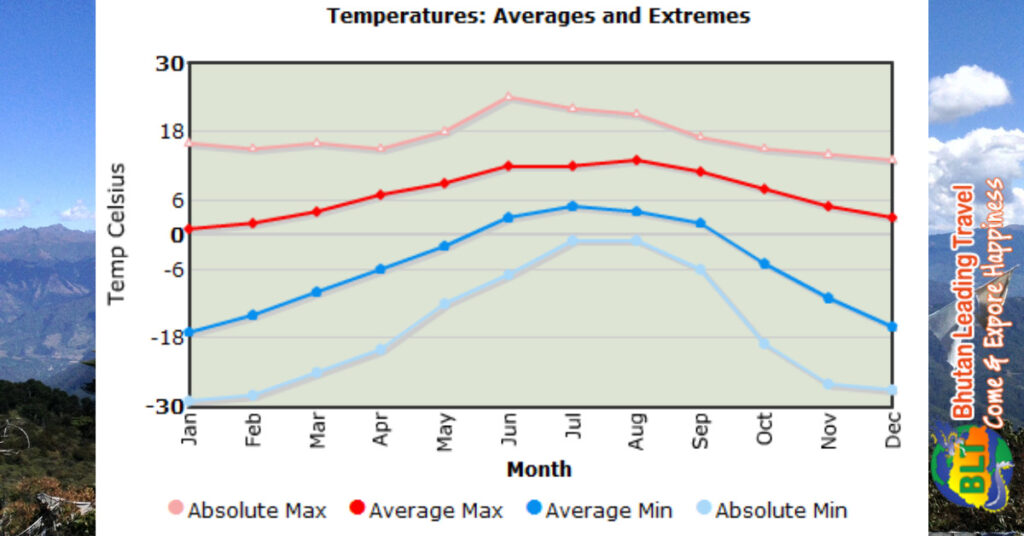
The following chart illustrates the average high and low temperatures for each month. It also provides information on the maximum and minimum temperatures recorded.
Monthly Precipitation Levels
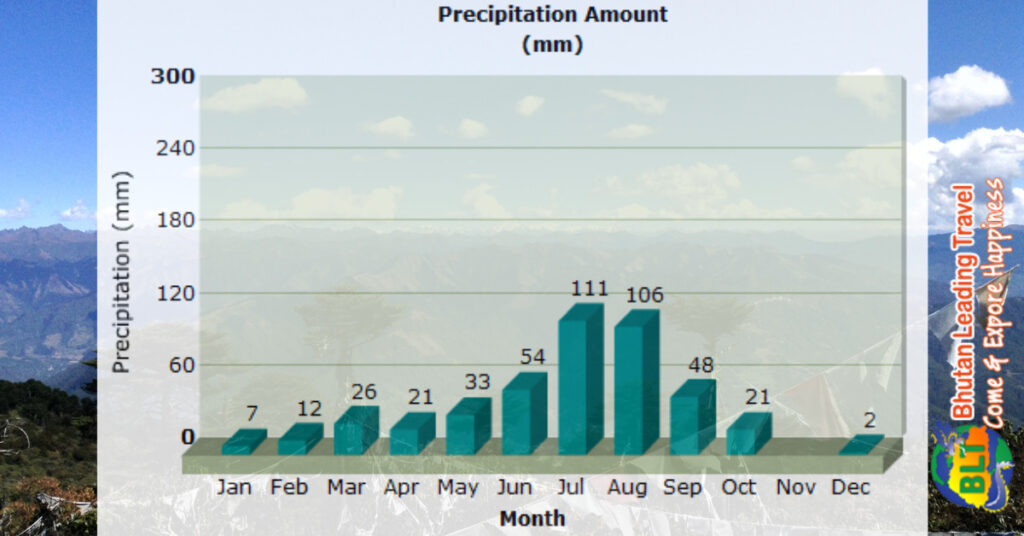
The next chart depicts the average monthly precipitation levels, providing a clear picture of the wettest and driest periods in Bhutan.
Rainfall Frequency
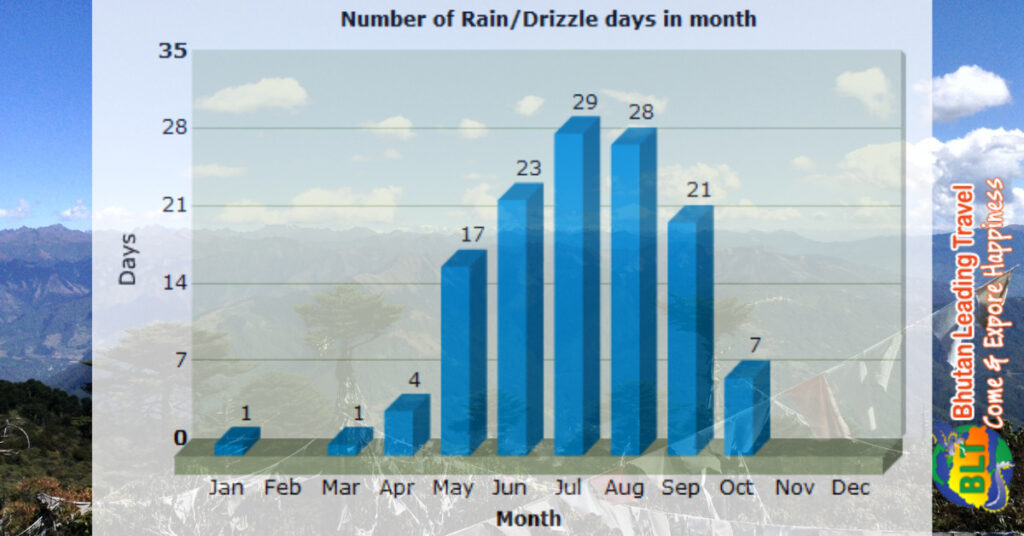
The subsequent chart provides insights into the average number of rainy days per month, helping you plan your visit to avoid the wettest periods.
Snowfall Occurrences
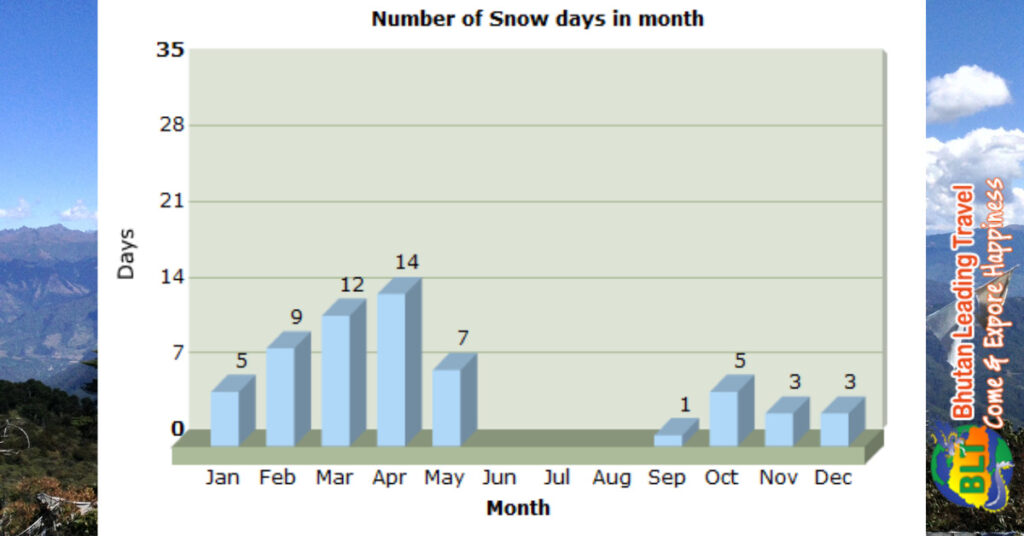
The following chart shows the average number of snowfall days per month. This information is crucial for those planning to visit Bhutan’s higher altitudes.
Wind Speed Variations
The final chart presents the average daily wind speed for each month, along with the maximum recorded sustained wind speed. This data is particularly useful for those interested in outdoor activities like trekking and hiking.
In conclusion, Bhutan’s weather is as diverse as its landscape, offering a unique blend of climates. Understanding these weather patterns can significantly enhance your travel experience, ensuring you’re well-prepared for the conditions you’ll encounter.

